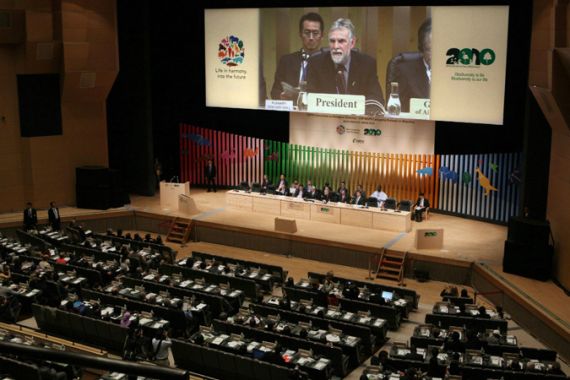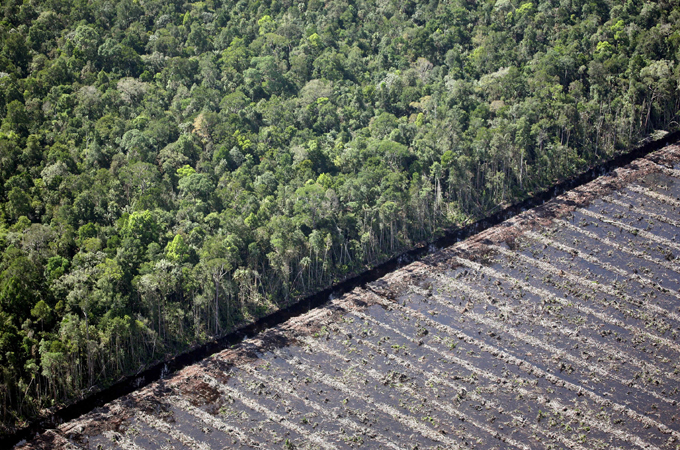UN charts ecosystems preservation
Delegates from more than 190 nations gather in Tokyo to discuss how natural world threatened by pollution can be saved.

A United Nations conference seeking to ensure the survival of diverse species and ecosystems has opened in the Japanese capital Tokyo.
Delegates from more than 190 countries started discussing how ecosystems threatened by pollution, exploitation and habitat encroachment can be preserved.
Keep reading
list of 4 itemsWorld’s coral reefs face global bleaching crisis
Why is Germany maintaining economic ties with China?
Australia’s Great Barrier Reef suffers worst bleaching on record
But divisions between rich and poor nations over what actions to take at the two-week conference, which began on Monday, could become a major obstacle. A failure to agree on these actions has bogged down previous global climate negotiations.
Scientists warn that unless more is done to protect species, extinctions will increase and the intricately interconnected natural world will be damaged with devestating consequences.
“We’re on the verge on the major extinction spasm,” said Russ Mittermeier, president of Conservation International and a field biologist who has spent decades studying primates and reptiles.
“Healthy ecosystems are the underpinnings of human development.”
If one part of the complex network of living organism disappears – like bees, which perform the critical role of pollination and whose numbers are falling – the whole system can collapse, scientists argue.
‘Natural assets’
Nick Nuttall, a spokesman for the UN Enviromment Programme, told Al Jazeera from the city of Nagoya that the planet’s “life support systems” were under threat.
“We’re undercutting the very life support systems that make this planet habitable. We’re undercutting the livelihoods and lives of potentially millions, if not billions, of people unless we reverse the rate of loss of biodiversity,” he said.
“These are natural assets. We’re now seeing the economics coming forward. Perhaps every year we’re losing up to $4.5tn in terms of what you might call natural capital. That’s year in, year out …
 |
|
Scientists warn that unless more is done to protect nature, there will be devastating consequences [AFP] |
“Unless we turn the ship around, unless we start treating nature as fundamentally part of our chance of living together as six billion people – going to nine billion people by 2050 – then we’re in serious trouble.”
The UN Convention on Biological Diversity will be asked to set 20 measurable targets for the next decade to try to slow or halt these trends.
One of the most important issues is a proposal to set aside vast tracts of land and ocean as protected areas, although developing nations do not want this to undercut their prospects for economic development.
A contentious issue will be trying to create a legal structure to equitably share access and benefits from genetic resources, such as plants that have medicinal value – long a sore point among developing countries.
Madagascar, for example, has the rosy periwinkle, a plant that produces two cancer-fighting substances and is native to the Indian Ocean nation. Western drug companies have grown the plants and profited from them, but little of the proceeds have been shared with Madagascar.
Developing countries argue they should receive a share of the proceeds, and the convention will seek to set up a protocol to deal with this in a fair way.
The biodiversity convention, born out of the 1992 Earth summit in Rio de Janeiro, does not have a good track record. It has failed to reach global goals set in 2002 to make improvements in protecting biodiversity by this year.
Scientists estimate that the Earth is losing species 100 to 1,000 times the historical average. They warn that is pushing the Earth towards its sixth big extinction phase, the greatest since the dinosaurs were wiped out 65 million years ago.
‘Extinction risk’
Mittermeier said that in his field, of the 669 different kinds of primates, 49 per cent are threatened, largely because of habitat destruction and hunting.
“That’s indicative of a real extinction risk,” he said.
Under one of the 20 proposed goals for 2020, delegates will seek to agree on a percentage of land and ocean to be designated protected areas. This can range from a strict nature reserve to an area managed for sustainable use of natural resources.
The draft text of the final agreement calls for the land percentage to be raised to 15 or 20 per cent, up from about 13 per cent now. But no specific target has surfaced for oceans, of which less than 1 per cent are currently protected.
But even if governments agree on a global figure, implementing the plan is bound to encounter plenty of hurdles, including businesses that do not want to give up access to resources.
Japan will be looking to this conference as a chance to portray itself as a protector of biodiversity.
It helped kill off many of the measures at the Cites, or Convention on International Trade in Endangered Species, meeting earlier this year that would have limited the trade in tuna, sharks and other marine species.
Tokyo has also been sharply criticised by environmental groups for its whaling programme.
“t’s a chance for the Japanese government to show that Japan can play a leadership role in marine and biodiversity issues,” Wakao Hanaoka, an ocean campaigner for Greenpeace, the environment watchdog, said